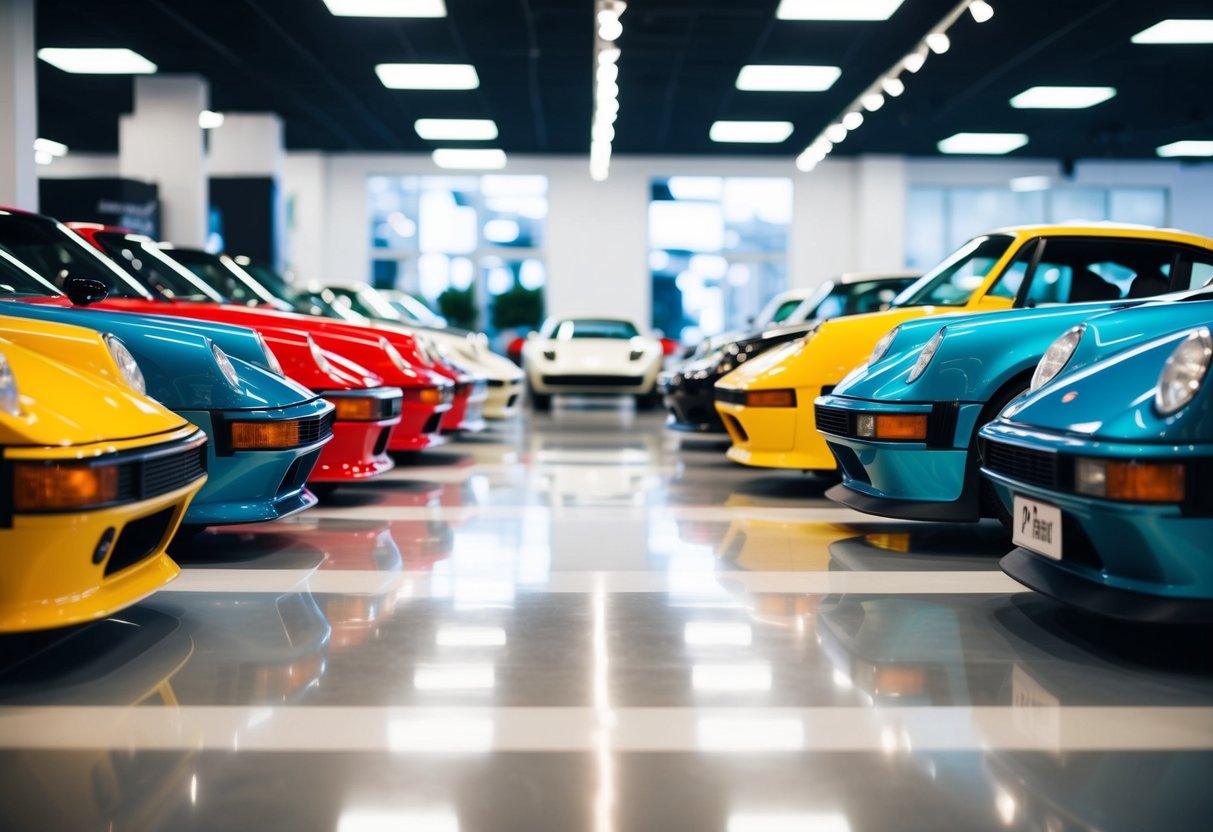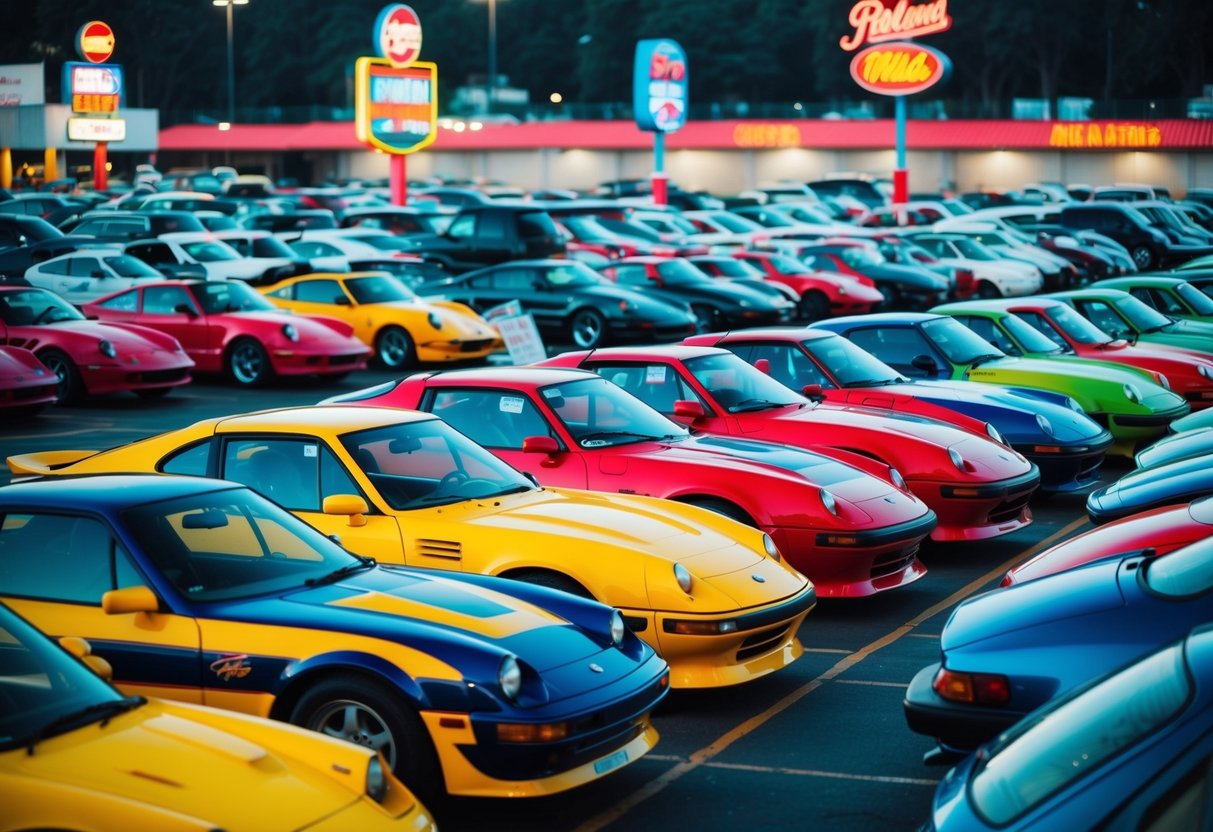
Buick GNX: America’s Muscle Surprise
The Buick GNX, an evolution of the Buick Grand National, took the muscle car world by storm in 1987. With its stealthy black exterior and powerful V6 turbocharged engine, the GNX offered a fierce performance rivaling some supercars of the time. Car aficionados appreciated its unique blend of luxury and raw power.
Limited to just 547 units, the GNX was a rare gem. Combining a 4.3-second 0 to 60 mph time with a striking design, it established itself as a collector’s delight. The GNX’s legacy endures as a testament to Buick’s ability to surprise everyone with a car that perfectly married classic muscle car aesthetics with advanced performance engineering.
The Unique Flair of 80s Car Culture and Design

The 1980s marked a period where automotive design and cultural influences merged, resulting in distinctive shapes and forms. Key elements to explore include the impact of popular media and the rise of geometric aesthetics in vehicle design.
Pop Culture Influence
During the 1980s, pop culture played a significant role in defining car aesthetics. Television shows and films highlighted sports cars, turning them into symbols of success and freedom. The DeLorean DMC-12, with its futuristic stainless-steel body and gull-wing doors, famously appeared in the “Back to the Future” film series, embedding it in the public consciousness. Meanwhile, the Ferrari 308 GTB was made famous by the TV show “Magnum, P.I.”, captivating audiences with its sleek design and powerful performance.
Music videos and magazines also contributed to making certain models aspirational. These platforms reinforced the appeal of owning an exotic car, bridging the gap between fantasy and reality. The Porsche 944 was another standout model featured in various media outlets, its design appealing to a new generation of car enthusiasts. This intersection of media and automotive design solidified many cars of this era as cultural icons.
The Wedge Era: Form Follows Function
The 1980s introduced a unique geometric design known as the wedge shape, characterized by sharp angles and sleek lines. This trend was not only aesthetic but also functional, enhancing aerodynamics for better performance. Cars like the DeLorean DMC-12 exemplified this style, with their low, angular bodies that reduced drag and maximized speed.
The Ferrari 308 GTB further demonstrated how designers employed wedge principles to achieve high speeds and superior handling. This design philosophy influenced numerous other models, including the Porsche 944, which combined these elements with practicality. 80s cars thus became emblems of innovation, where aggressive styling met technological advancements, creating memorable vehicles that still capture the imagination today.
Motorsports and the 80s: A Definitive Era
The 1980s marked a thrilling time in motorsports with revolutionary advancements and awe-inspiring performances. This era transformed rally racing with the introduction of Group B cars and witnessed legendary track battles featuring brands like Porsche and Ferrari.
Group B Rallying: The Pinnacle of Racing
Group B rallying set a new standard in the world of racing during the 1980s. Known for allowing minimal restrictions and high levels of innovation, manufacturers pushed the limits of speed and technology. Among the prominent cars, the Audi Quattro stood out for its groundbreaking all-wheel-drive system. The Quattro’s dominance in the rally scene helped Audi secure numerous victories.
Other notable rally cars included the Peugeot 205 T16 and the Ford RS200. Enthusiasts often reminisce about Group B for its exhilarating and dangerous nature, as these cars reached unprecedented speeds on demanding terrains.
Despite its relatively short lifespan, the impact of Group B remains a cornerstone in motorsport history, influencing car culture and automotive engineering for years to come.



